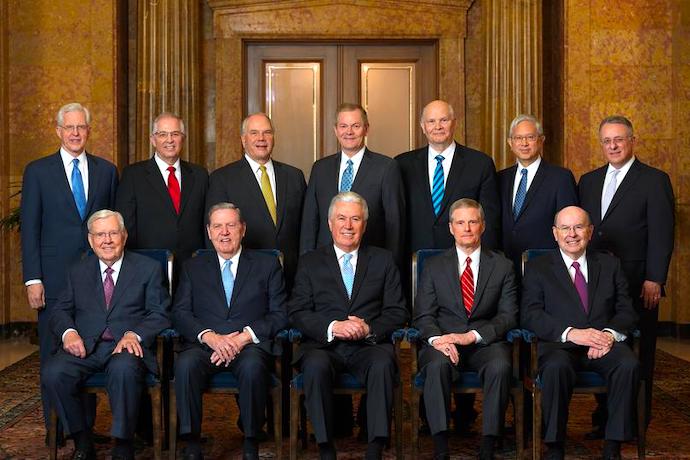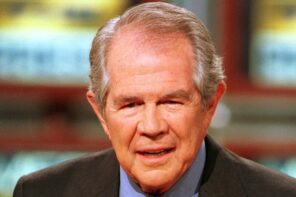In 1995, in a document called the Family Proclamation, leaders of The Church of Jesus Christ of Latter-day Saints made explicit what had long been an oft-discussed but little documented element of Latter-day Saint belief: “All human beings—male and female—are created in the image of God. Each is a beloved spirit son or daughter of heavenly parents,” implying both a father and a mother.
Many, many people hunger for more experience of the feminine divine. I personally have sung hymns to the goddess with pagans and hymns to both a divine mother and father with Unitarian Universalists. All the branches of monotheism have vibrant feminist theology movements, despite (or perhaps because of) the frequency with which God is depicted in scripture as a father.
But for many Latter-day Saints, the issue of the female divine involves not just how one sees God but how one sees oneself.
The primary Latter-day Saint reference to a Heavenly Mother comes from poet Eliza R. Snow, a contemporary and plural wife of the Church’s founder, Joseph Smith. In an 1845 poem frequently referred to by its first three words, “Oh My Father,” Snow wrote:
In the heav’ns are parents single?
No, the thought makes reason stare!
Truth is reason; truth eternal
Tells me I’ve a mother there.
The gospel topic essay on Heavenly Mother in the Church’s gospel library (basically an encyclopedia of Latter-day Saint orthodoxy, created and maintained by the Church) contains all of six paragraphs, the first of which includes this 1995 statement from Elder Dallin H. Oaks: “Our theology begins with Heavenly Parents. Our highest aspiration is to be like them.”
Since 1995, Latter-day Saints have been clearly instructed to emulate heavenly parents. But how are women supposed to do that, since Heavenly Mother is defined by her silence and absence? Should women want to disappear? Does righteous living confer on women the ability and desire to be invisible to their children? If one’s eternal destiny is to be a vague shadow, is one a shadow already?
Admittedly, not every Latter-day Saint woman asks such questions. But many do. Consequently, they (as well as some men) seek revelation about Heavenly Mother—and ask their leaders to do the same.
Before going further, it’s useful to briefly revisit the origin story of The Church of Jesus Christ of Latter-day Saints.
Confused about which church he should join, 14-year-old Joseph Smith read James 1:5:
“If any of you lack wisdom, let him ask of God, that giveth to all men liberally, and upbraideth not; and it shall be given him.”
Joseph therefore decided to ask God for wisdom. In response, God and Jesus Christ appeared to Joseph and told him to join no church, for they were all false. Instead, Joseph would be guided to restore God’s one true church to the earth a decade later.
The salient point here is that the church created by Joseph Smith in 1830 was thoroughly grounded in what Latter-day Saints call “gifts of the Spirit,” gifts such as wisdom, knowledge, and prophecy that Joseph exercised himself as he strove to understand what he believed God required of him. Any knowledge anyone acquires about Heavenly Mother today must also come through gifts of the Spirit.
Crucially, the Church has always taught that the gift of revelation is available to everyone, just as it was available to 14-year-old Joseph Smith when he prayed for answers to his questions:
Prophets are the only people who can receive revelation for the Church, but they are not the only people who can receive revelation. According to our faithfulness, we can receive revelation to help us with our specific personal needs, responsibilities, and questions and to help us strengthen our testimony.
It shouldn’t be a problem for men whose titles indicate that they’re “prophets, seers, and revelators” (as the First Presidency and Quorum of the Twelve Apostles have proclaimed themselves to be) to exercise such spiritual gifts as prophecy, wisdom, and knowledge, and to reveal not merely desired but necessary knowledge about the religious truth they say Latter-day Saint theology begins with.
However, given these men’s reticence on the topic, they clearly don’t want to provide that knowledge. And even more than that, they really don’t want Latter-day Saints to exercise gifts of the Spirit to learn more about Heavenly Mother on their own—which the Church has consistently told them they have the right and the means to do.
This is the situation that explains the talk given by Elder Dale G. Renlund on April 2, 2022, as part of the Church’s General Conference. As the concluding speaker of the Women’s Session Saturday evening, Renlund devoted a little more than 300 words to explaining why it’s “arrogant and unproductive” to seek to know more about Heavenly Mother.
Renlund begins his discussion of Heavenly Mother by summarizing what little is known about her before justifying her absence from Latter-day Saint prayer and worship:
The Savior taught his disciples, “Always pray unto the father in my name.” We follow this pattern and direct our worship to our Heavenly Father in the name of Jesus Christ and do not pray to Heavenly Mother.
Renlund makes the eight words in quotes—Always pray unto the father in my name—do a lot of heavy lifting. It’s entirely possible that what’s explained here is not how to pray, period, but simply how to pray unto the father. Maybe, if anyone asked, Jesus would explain how to pray unto the mother.
Renlund’s next claim is highly problematic:
Ever since God appointed prophets, they’ve been authorized to speak on his behalf, but they don’t pronounce doctrines fabricated of their own mind, or teach what hasn’t been revealed.
The Church has been embarrassed often enough by the statements of its past prophets and presidents that it’s had to remind everyone that “Prophets are men…[who] are subject to error on the same basis as the views of anyone else in the Church.”
For example: when he was prophet and president of the Church, Brigham Young taught that Black men “never can hold the Priesthood or share in it until all the other descendants of Adam have received the promises and enjoyed the blessings of the Priesthood and the keys thereof.” Young also taught that “the only men who become Gods, even the sons of God, are those who enter into polygamy.” I’m old enough to remember when these teachings were preached as official Latter-day Saint doctrines, but they’re now considered Brigham Young’s personal, and mistaken, opinions.
Likewise, until his death in 2008, President Gordon B. Hinckley taught Latter-day Saints to embrace the term Mormon as meaning “more good.” But soon after Russell M. Nelson became president of the Church in 2018, Nelson condemned the term as “a major victory for Satan.” It’s hard to understand why the Lord waited until the Church was 188 years old before communicating to his prophet how odious he found the term most members applied to themselves and the Church. Hinckley’s successor, President Thomas S. Monson, asked members to participate proudly in the Church’s ambitious “I’m a Mormon” campaign in 2010. Were Hinckley and Monson teaching doctrines fabricated of their own minds, or is Nelson?
All of which is to say that prophets sometimes do pronounce doctrines fabricated of their own mind, and that they do teach what hasn’t been revealed.
Renlund concludes his discussion of Heavenly Mother topic with a call to inaction:
Latter-day prophets are similarly constrained. Demanding revelation from God is both arrogant and unproductive. Instead, we wait on the Lord and his timetable to reveal his truths through the means that he has established.
Given that he invokes the Church’s prophets today, Renlund should ponder the example of President Spencer W. Kimball, who in 1978 received the revelation that Black men are entitled to receive the priesthood:
Spencer had to ask anew. He wanted urgently “to find out firsthand what the Lord thought about it.” It was not enough just to wait until the Lord saw fit to take the initiative: the scripture admonished him to ask and to knock if he wanted to know for himself. [emphasis added]
The Church has worked extremely hard to make itself incompatible with any sort of queerness. (See for example Dallin H. Oaks’s latest General Conference talk.) Renlund’s talk is evidence that the Church is similarly working to be incompatible with feminism.
A silent, invisible wife is not equal to her husband, and the Church repeatedly tells Latter-day Saints that women (who cannot hold the priesthood) are not inferior to men (who can hold the priesthood), and that husbands and wives should be “equal partners.”
Every problem the Church faces around Heavenly Mother is due to Latter-day Saints taking their leaders’ statements seriously. Renlund’s discussion of Latter-day Saints’ knowledge and ignorance of Heavenly Mother, brief as it is, violates vital Latter-day Saint teachings about prayer, revelation, and even the role of women. It’s Renlund and the men he speaks for, not those wishing to know more about Heavenly Mother, who are arrogant and unproductive here.





